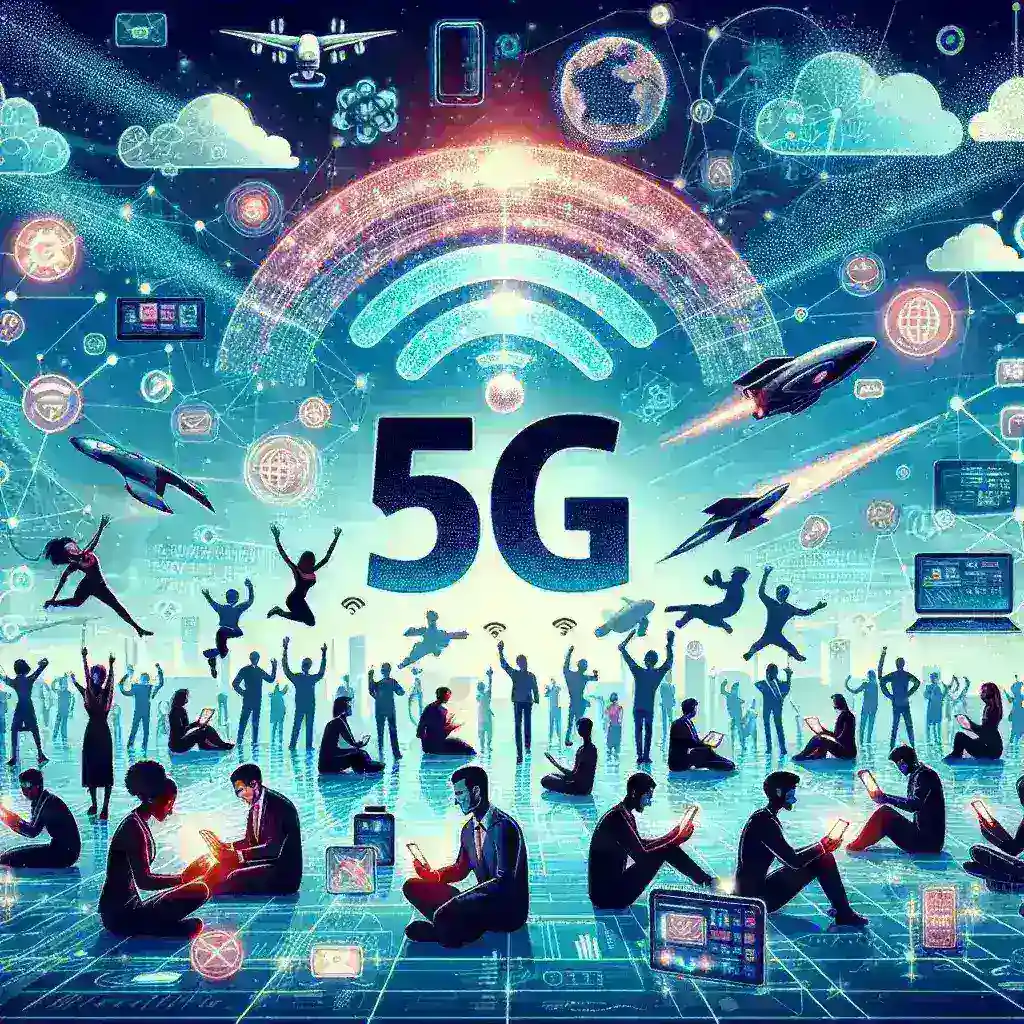Understanding 5G Technology: The Next Evolution in Wireless Communication
5G technology represents the fifth generation of mobile networks, marking a significant leap forward in wireless communication. This revolutionary technology isn’t just an incremental improvement over its predecessor, 4G LTE; it’s a complete reimagining of what’s possible in the world of mobile connectivity. In this comprehensive guide, we’ll explore everything you need to know about 5G, from its groundbreaking speeds to its transformative applications.
The Fundamental Principles of 5G Technology
At its core, 5G technology operates on three main frequency bands, each serving different purposes and offering unique capabilities:
- Low-band spectrum (sub-1GHz): Provides widespread coverage and better building penetration
- Mid-band spectrum (1-6GHz): Offers a balance between coverage and capacity
- High-band spectrum (24-47GHz): Delivers ultra-high speeds in dense urban areas
Revolutionary Internet Speeds and Performance
One of the most striking features of 5G technology is its unprecedented speed capabilities. Here’s what you can expect:
- Peak download speeds up to 20 Gbps
- Average speeds of 100-900 Mbps in real-world conditions
- Latency as low as 1 millisecond
- Support for up to 1 million connected devices per square kilometer
To put these numbers in perspective, 5G is capable of delivering speeds up to 100 times faster than 4G LTE. This means you could potentially download a full HD movie in mere seconds rather than minutes.
How 5G Technology Works: The Technical Framework
5G technology operates through a sophisticated network architecture that incorporates several innovative technologies:
1. Network Slicing
Network slicing allows operators to create multiple virtual networks within a single physical network infrastructure. This enables them to allocate resources more efficiently and provide customized services for different use cases, from IoT devices to mission-critical applications.
2. Massive MIMO (Multiple Input, Multiple Output)
Massive MIMO technology uses multiple antennas at both the transmitter and receiver to improve network capacity and spectrum efficiency. This allows for better handling of multiple data streams simultaneously, resulting in improved performance and reduced interference.
3. Beamforming
Beamforming technology focuses radio signals directly toward specific devices rather than broadcasting in all directions. This targeted approach improves signal strength, reduces interference, and enhances overall network efficiency.
The Transformative Benefits of 5G Technology
1. Enhanced Mobile Broadband (eMBB)
5G’s enhanced mobile broadband capabilities deliver exponentially faster data speeds and greater capacity, enabling:
- 8K video streaming without buffering
- Advanced virtual and augmented reality experiences
- Cloud gaming with zero latency
- Improved video conferencing quality
2. Ultra-Reliable Low-Latency Communication (URLLC)
The near-instantaneous response times of 5G enable critical applications such as:
- Remote surgery and telemedicine
- Autonomous vehicles
- Industrial automation
- Real-time robotics control
3. Massive Machine-Type Communications (mMTC)
5G’s ability to support a massive number of connected devices enables:
- Smart city infrastructure
- Large-scale IoT deployments
- Agricultural monitoring systems
- Industrial sensor networks
Industry Applications and Use Cases
Healthcare Revolution
5G technology is transforming healthcare through:
- Remote patient monitoring with real-time data transmission
- Telesurgery with haptic feedback
- AI-powered diagnostic tools
- Connected ambulance services
Manufacturing and Industry 4.0
In the manufacturing sector, 5G enables:
- Smart factories with automated processes
- Predictive maintenance systems
- Digital twins for real-time monitoring
- Advanced quality control through AI and machine vision
Smart Cities and Infrastructure
5G technology powers smart city initiatives through:
- Intelligent traffic management systems
- Smart grid optimization
- Public safety and emergency response
- Environmental monitoring
Challenges and Future Developments
While 5G technology offers tremendous potential, there are several challenges to consider:
- Infrastructure Requirements: The need for dense networks of small cells and upgraded infrastructure
- Coverage Limitations: High-frequency waves have limited range and building penetration
- Implementation Costs: Significant investment required for network deployment
- Security Concerns: New security challenges with increased connected devices
The Future of 5G Technology
As 5G technology continues to evolve, we can expect:
- Integration with emerging technologies like AI and edge computing
- Enhanced spectrum efficiency through advanced algorithms
- New applications and use cases across industries
- Improved energy efficiency and sustainability
Preparing for the 5G Revolution
To make the most of 5G technology, organizations and individuals should:
- Assess their current technology infrastructure
- Identify potential use cases and applications
- Develop strategies for implementation
- Stay informed about evolving standards and capabilities
Conclusion
5G technology represents a paradigm shift in wireless communication, offering unprecedented speeds, reliability, and connectivity. Its impact extends far beyond faster mobile internet, revolutionizing industries and enabling new possibilities in healthcare, manufacturing, transportation, and smart city development. As the technology continues to mature and coverage expands, we can expect to see even more innovative applications and transformative use cases emerge, shaping the future of our connected world.
As we embrace this new era of connectivity, it’s crucial to understand both the potential and limitations of 5G technology. By staying informed and prepared, individuals and organizations can better position themselves to leverage the benefits of this revolutionary technology while addressing its challenges effectively.

Leave a Reply